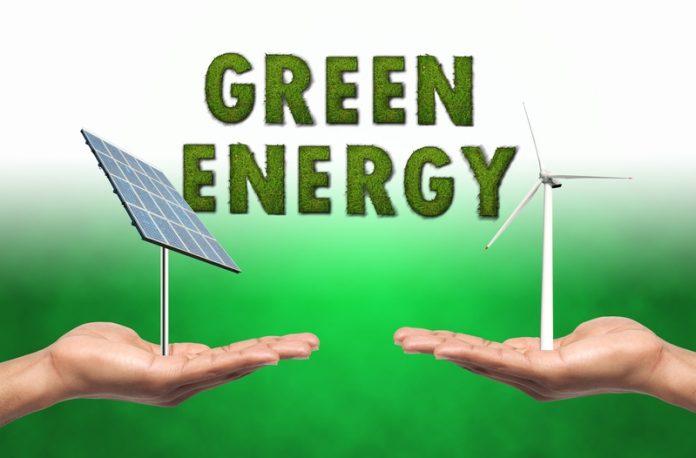Director General of the Danish Energy Agency, Kristoffer Böttzauw introduces the work in the Danish Energy Agency to transform the country’s energy system and not least their efforts on the green transition globally
With the 2015 Paris Agreement, the world is on a new trajectory towards sustainable development and a low-carbon economy. Delivering on the promise of Paris requires countries to scale up renewable energy urgently and to use energy more efficiently.
For more than 30 years, the Danish Energy Agency has worked for a green transformation of the energy system in Denmark, and the results are promising:
- Today, Gross Energy Consumption is lower than in 1990 in spite of considerable economic growth;
- Renewable energy covers more than 30% of energy consumption and about 55% of electricity consumption;
- Danish emissions of greenhouse gases have been reduced by around 30% since 1990;
- We have experienced strong growth in Danish exports of energy technologies, and today the export accounts for 11% of the total Danish exports of commodities. This is the highest share in Europe.
The energy transition has been supported by a large majority of the Danish Parliament, which has ensured a stable framework for energy sector stakeholders and has minimised the risk associated to making the investments necessary for transforming the energy system. In June 2018, the government and all political parties in the Parliament agreed to a new Energy Agreement.
According to the agreement, three large offshore wind farms with a total capacity of 2,400 MW will be established, significantly expanding the already high wind power production in Denmark. The new wind farms will contribute to Denmark already in 2030 being able to cover 100% of its electricity consumption with power from renewable energy sources.
By going from black to green, we are now on target to become independent of fossil fuels by 2050. Coal for power production will be phased out by 2030. That is an important milestone in our trajectory towards 2050. For the Danish Energy Agency, it is an important objective that the transition is carried out in a cost-effective manner and with minimum costs for the taxpayers and energy consumers.
High degree of security of supply
The fluctuating nature of wind power and solar PV is a common challenge for all countries replacing fossil fuels with these technologies. Accordingly, new solutions ensuring a high degree of security of supply need to be developed and maintained. But our experiences are good: 30 years ago we thought that the maximum share of wind power we could handle in the electricity supply would be 20%. Today, wind power covers 43% of electricity consumption, and the Danes still have power 99.996% of the time. That is the second highest degree of security of electricity supply in Europe.
Thanks to an efficient market setup within the Nordic countries and a good coupling to the German market, Denmark has avoided the curtailment of wind power. Furthermore, the power market has given strong incentives for the coal-fired power plants in Denmark to operate very flexible, typically down to 10% of their nameplate capacity.
The potential for wind power deployment in the North Sea remains huge: calculations show that it may cover up to 12% of electricity consumption in Europe corresponding to the consumption of 100 million households. But if costs should be kept at a reasonable level, countries around the North Sea need to coordinate the relevant regulation across the countries.
Just to mention a few examples, today, there are different requirements for the colour of the wind turbine foundations, and different regulations when it comes to workers’ safety and the environment. This implies that staff on the service ships sometimes are required to change their safety shoes when crossing a national border. We are constantly working to strengthen the North Sea Energy Cooperation to avoid such unnecessary barriers, and if we succeed, the North Sea may develop into a Silicon Valley for wind power.
In-depth analysis and scenario projections are essential
Long-term development of the energy system has so far been supported by in-depth analysis as well as baseline scenario projections. This has given Danish politicians confidence that the direction they wanted to steer the energy system towards, was realistic.
Overall, I would argue that our long tradition when it comes to energy system modelling and a holistic approach for energy planning has given Denmark valuable competencies. We believe that Danish experiences can provide important insights into how nations can set out an ambitious and cost-effective path for a sustainable transformation of their energy systems.
Danish experience on the green transition can be used globally
Since 2012, we have gradually expanded our cooperation with partner countries and offered Danish experiences and expertise in technologies and issues, such as onshore and offshore wind, power grid issues, district heating, energy efficiency, scenario-based policymaking, levelised cost of energy calculations and power system flexibility. Today, we partner with 14 countries that together cover more than 60% of the world’s GHG emissions.
The most extensive co-operation programme is with China, where there is an ongoing collaboration between Chinese authorities and the Danish Energy Agency covering among other things, modelling and scenario-based policy with China National Renewable Energy Centre and a programme focused on improving the flexibility of Chinese thermal power plants. This broad cooperation aims at enabling China to achieve its climate and energy goals in a cost-efficient manner, taking advantage of the lessons learned in Denmark.
We hope that, by doing so, even though we are a small country, we are able to support the transition towards a greener, more sustainable, global economy.
Kristoffer Böttzauw
Director General
Danish Energy Agency
part of the Danish Ministry of Energy, Utilities and Climate
Tel: +358 33 92 67 00











